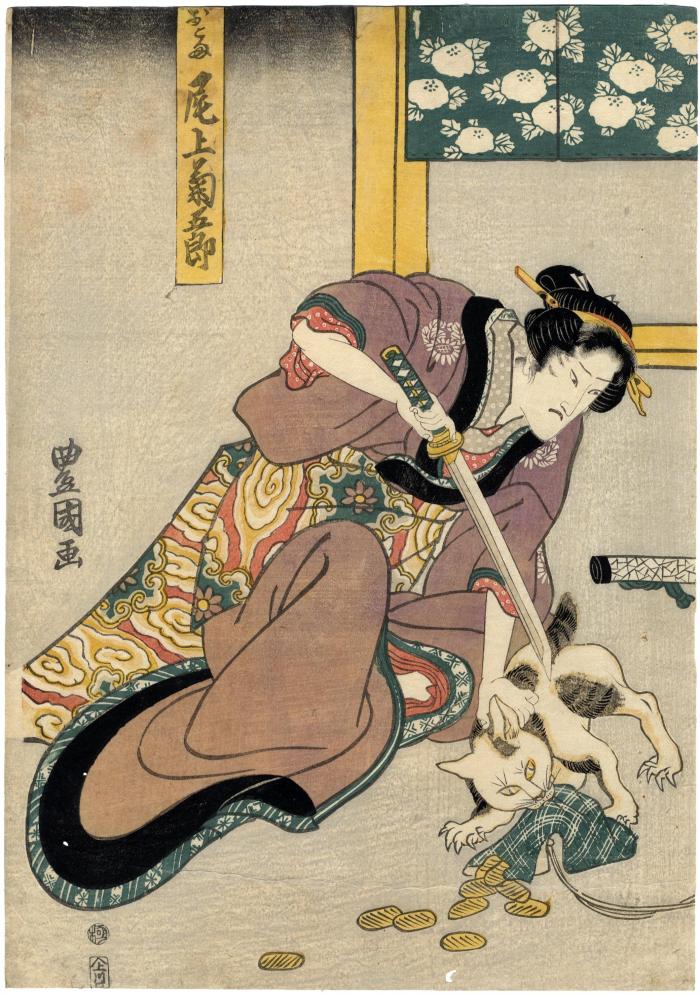Utagawa Toyokuni I (初代歌川豊国) (artist 1769 – 02/24/1825)
Onoe Kikugorō III (尾上菊五郎) as Okoma (おこま) menacing a cat - from the play Tsuma Gasane Kanete Kikuzuki (褄重噂菊月 - 'Rumors of the Chrysanthemum Moon') - left panel of a diptych
1816
10.25 in x 14.5 in (Overall dimensions) Japanese woodblock print
Signed: Toyokuni ga (豊国画)
Publisher: Kawaguchiya Uhei
(Marks 232 - seal 21-142)
Censor's seal: kiwame
Bank of Japan Currency Museum
Muzeum Sztuki i Techniki Japońskiej Manggha, Krakow Allen Hockley wrote in 2006 in the catalogue Public Spectacles, Personal Pleasure: Four Centuries of Japanese Prints from a Cincinnati Collection on page 59 that this scene is from the play Tsuma Gasane (Kaneke Kikuzuki) [褄重噂菊月] performed at the Nakamura-za in 1816. The right-hand panel features Bandō Mitsugorō as Kisazō, but he refers to the character played by Kikugorō III as O-Komo, whereas the Bank of Japan Currency Museum identifies her as Okama.
According to Hockley, Tsuma Gasane was a modernized version of an account from The Tale of Heike where the Emperor asked his lieutenants to rid him of the nue, a monster, that lived in the attic of the palace. However, here, the monster is represented by a cat which has come to steal a purse full of gold coins. But before it got to the kabuki stage it was performed in the Nō theater.
"O-Komo, mimicking the role of Ino Hayata, holds the cat by the neck as she threatens it with a sword. Kisazō holds a lantern replacing the torch Yorimasa used in the original tale.
By the early 1800s special stage effects used in kabuki had become very sophisticated. Actors in elaborate costumes generally play the roles of large animals and mythical beasts such as horses and nue. For smaller animals, such as cats, mechanical dolls operated from above or below the stage were used."
Quoted from: Public Spectacles, Personal Pleasures: Four Centuries of Japanese Prints from a Cincinnati Collection by Allen Hockley, 2006, p. 59.
Kawaguchiya Uhei (川口屋卯兵衛) (publisher)
Onoe Kikugorō III (三代目尾上菊五郎: 11/1815-3/1848) (actor)
actor prints (yakusha-e - 役者絵) (genre)
